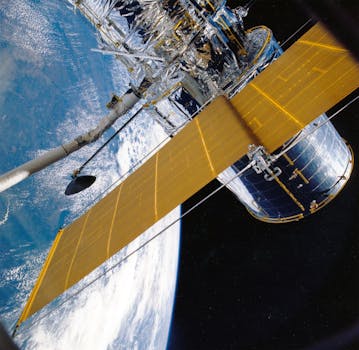
The Future of Satellites: Revolutionizing Global Communication and Exploration
The future of satellites is rapidly evolving, with advancements in technology and innovation, enabling global communication, exploration, and discovery. As we continue to push the boundaries of space technology, satellites are playing an increasingly crucial role in shaping our world. In this article, we will delve into the latest developments and trends in the satellite industry, and explore the exciting possibilities that lie ahead.
One of the most significant advancements in satellite technology is the development of small satellites, also known as smallsats. These compact satellites are designed to be more efficient, cost-effective, and versatile than their larger counterparts. Smallsats are being used for a wide range of applications, including Earth observation, communication, and scientific research. For instance, companies like Planet Labs and DigitalGlobe are using smallsats to provide high-resolution images of the Earth, which are being used for applications such as crop monitoring, disaster response, and urban planning.
Advancements in Satellite Technology
In addition to smallsats, there are several other advancements in satellite technology that are worth noting. One of the most significant is the development of reusable launch vehicles, which are capable of launching satellites into orbit and then returning to Earth for refurbishment and reuse. Companies like SpaceX and Blue Origin are leading the charge in this area, with their reusable launch vehicles reducing the cost of access to space and making it more feasible for companies and governments to launch satellites.
Another area of advancement is in the development of satellite constellations, which involve launching multiple satellites into orbit to provide global coverage and connectivity. Companies like OneWeb and Amazon’s Kuiper Systems are building satellite constellations to provide high-speed internet access to remote and underserved communities around the world. These constellations have the potential to revolutionize the way we communicate and access information, and could have a significant impact on global economic development and social equality.
Exploration and Discovery
Satellites are also playing a crucial role in exploration and discovery, enabling us to study the Earth and the universe in unprecedented detail. For example, the European Space Agency’s Gaia mission is using a satellite to create a highly accurate 3D map of the Milky Way galaxy, while the NASA’s Transiting Exoplanet Survey Satellite (TESS) is using a satellite to search for exoplanets and study the atmospheres of distant worlds.
In addition to these examples, satellites are being used for a wide range of scientific research applications, including climate change research, weather forecasting, and natural disaster monitoring. For instance, the NASA’s Orbiting Carbon Observatory (OCO) is using a satellite to study the Earth’s carbon cycle and monitor the effects of climate change, while the European Space Agency’s Sentinel-2 mission is using a satellite to monitor the Earth’s land surface and track changes in vegetation and land use.
Conclusion
In conclusion, the future of satellites is bright and exciting, with advancements in technology and innovation enabling global communication, exploration, and discovery. As we continue to push the boundaries of space technology, satellites will play an increasingly crucial role in shaping our world and improving our daily lives. Whether it’s providing high-speed internet access to remote communities, monitoring the effects of climate change, or searching for exoplanets, satellites are revolutionizing the way we communicate, explore, and understand the world around us.






